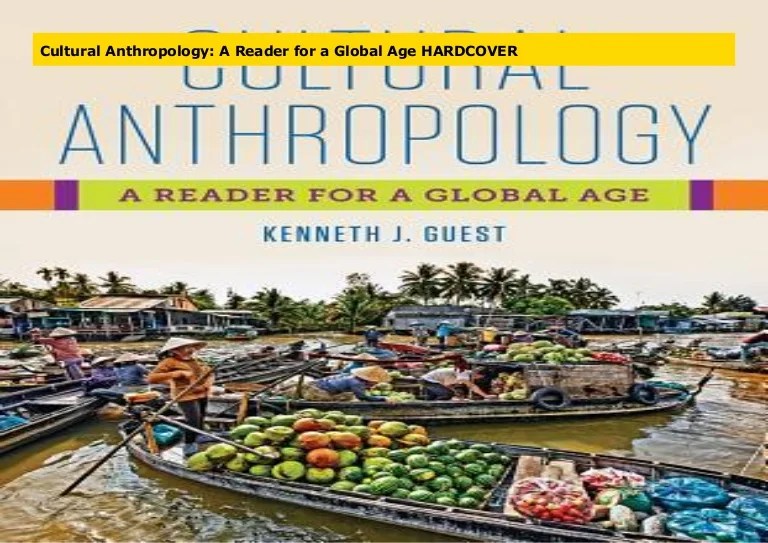Embarking on an exploration of Essentials of Cultural Anthropology: A Toolkit for a Global Age, this comprehensive guide unveils the intricate tapestry of human cultures, providing invaluable insights into the complexities of our interconnected world.
Cultural anthropology, as a discipline, unravels the foundations of human behavior, shedding light on the diverse ways in which societies organize themselves, communicate, and shape their realities. By delving into the core concepts, methods, and applications of cultural anthropology, this toolkit empowers readers to navigate the challenges and opportunities of an increasingly globalized world.
1. Cultural Anthropology
A Foundation

Cultural anthropology is a subfield of anthropology that studies human culture and society. It examines the beliefs, values, customs, and practices of different groups of people, exploring how they shape human behavior and social organization.
History and Development of Cultural Anthropology
Cultural anthropology emerged as a distinct discipline in the late 19th century, influenced by the works of scholars such as Franz Boas and Bronislaw Malinowski. They emphasized the importance of fieldwork and participant observation in understanding cultures from the inside out.
Key Methods and Approaches
- Participant observation:Anthropologists immerse themselves in a community for an extended period, observing and participating in daily life to gain firsthand insights.
- Ethnography:A detailed written description of a culture, based on fieldwork data and analysis.
- Interviews and surveys:Gathering information from individuals and groups through structured or open-ended questioning.
- Comparative analysis:Comparing different cultures to identify similarities, differences, and patterns.
2. Culture and Society
Definition of Culture
Culture refers to the shared beliefs, values, symbols, and practices that shape the way of life of a group of people. It includes everything from language and religion to art, music, and food.
Relationship between Culture and Society
Culture and society are closely intertwined. Culture provides the blueprint for social organization, guiding behavior and interactions. Society, in turn, shapes and reinforces culture through institutions and social practices.
Dimensions of Culture
- Language:The system of communication used by a group.
- Symbols:Objects, actions, or words that carry cultural meaning.
- Beliefs:Convictions about the world and its nature.
- Values:Principles that guide behavior and determine what is considered good or bad.
3. Cultural Diversity

Vast Diversity of Cultures
There is an astonishing diversity of cultures around the world, each with its own unique set of beliefs, practices, and social structures.
Factors Contributing to Cultural Diversity
- Geography:Physical environment can influence cultural practices and adaptations.
- History:Past events and experiences shape cultural beliefs and traditions.
- Social organization:Different social structures and institutions lead to variations in cultural norms.
Challenges and Opportunities of Cultural Diversity, Essentials of cultural anthropology: a toolkit for a global age
Cultural diversity can present challenges in communication, understanding, and conflict resolution. However, it also offers opportunities for learning, innovation, and cross-cultural exchange.
4. Globalization and Cultural Change

Concept of Globalization
Globalization refers to the increasing interconnectedness and interdependence of the world’s economies, cultures, and populations.
Impact on Cultures
Globalization has had a profound impact on cultures worldwide, leading to:
- Cultural diffusion:The spread of cultural elements from one group to another.
- Assimilation:The adoption of new cultural traits while abandoning old ones.
- Hybridization:The blending of different cultural elements to create new forms.
Role of Technology and Media
Technology and media play a significant role in shaping cultural change by facilitating communication, information sharing, and cultural exchange.
5. Applied Cultural Anthropology
Practical Applications
Cultural anthropology has practical applications in various fields, including:
- Education:Designing culturally sensitive curricula and teaching methods.
- Healthcare:Understanding cultural beliefs and practices to improve health outcomes.
- International development:Assisting in the design and implementation of programs that respect and support local cultures.
Ethical Considerations
Cultural anthropologists have ethical responsibilities to respect and protect the cultures they study, including obtaining informed consent and ensuring that their research does not harm participants.
Examples of Successful Projects
Examples of successful applied cultural anthropology projects include:
- Medical anthropology:Collaborating with healthcare providers to improve health outcomes for indigenous populations.
- Educational anthropology:Developing culturally responsive teaching methods for diverse student populations.
- International development:Assisting in the design of sustainable development programs that respect local cultural practices.
6. Anthropology in the 21st Century: Essentials Of Cultural Anthropology: A Toolkit For A Global Age

Emerging Trends and Challenges
Cultural anthropology faces emerging trends and challenges, including:
- Globalization and migration:Understanding the impact of increased human mobility on cultural diversity and change.
- Technology and the digital age:Exploring the role of technology in cultural production, consumption, and dissemination.
- Climate change:Examining the cultural implications of environmental degradation and climate change.
Use of New Technologies and Methodologies
Cultural anthropologists are embracing new technologies and methodologies, such as:
- Digital ethnography:Using digital tools to conduct research in online and virtual environments.
- Big data analysis:Analyzing large datasets to identify cultural patterns and trends.
- Participatory action research:Collaborating with communities to address social issues and promote cultural well-being.
Key Contributions to Society
Cultural anthropology continues to make significant contributions to society by:
- Promoting cultural understanding:Fostering appreciation and respect for diverse cultures.
- Addressing social problems:Providing insights into cultural factors that influence social issues and inform policy development.
- Shaping a more just and equitable world:Advocating for the rights of marginalized and underrepresented communities.
Expert Answers
What is the significance of cultural anthropology in today’s world?
Cultural anthropology provides crucial insights into the diverse ways of life, enabling us to understand and appreciate the richness of human experience. It fosters cross-cultural understanding, promotes tolerance, and equips us with the tools to navigate the complexities of an interconnected global society.
How does cultural anthropology contribute to solving global challenges?
Cultural anthropology offers valuable perspectives on issues such as poverty, conflict, and environmental sustainability. By understanding the cultural contexts of these challenges, we can develop more effective and culturally sensitive solutions that respect the values and beliefs of diverse communities.